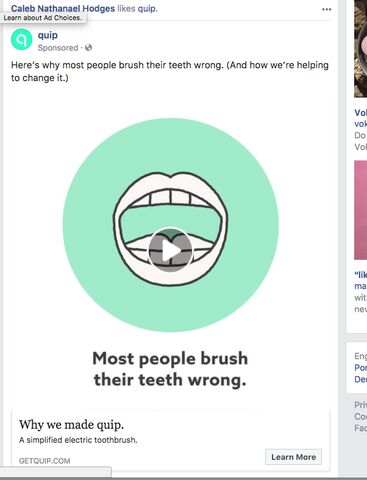The Only Three Frameworks You Need to Grab Your Customer’s Attention
Let’s face it. When you break down business to its most fundamental, foundational level you’re left with a surprising but simple realization.
Every business, regardless of the market or niche it serves, is fighting for one thing.
They fight for it in different ways but the goal is the same across the board.
Every business is fighting for the attention of their prospective customer. And even if someone is already a customer, you’re fighting for their attention too.
Without attention, you have no business. It is the great commodity.
And the method we use to get attention is called “marketing.”
The good news is that humanity has been at this business thing for a long time. You can study the great advertisers of the last 200 years and you’ll find that what worked then will most likely work now.
If you want a crash course into the minds of “the greats”, you won’t find a better resource than the book The Advertising Solution. You can get it on Amazon here. But you can also get some amazing bonuses at The Legends Book website here.
I highly recommend it!
Now, for those of you who want to walk away today with something you implement immediately – that’s both practical and powerful – please see below.
To get the attention of a prospective customer is no small task. But as I mentioned we’re not starting from scratch.
And today I want to walk you through three frameworks you can use no matter what business you’re in. After you go through these you’ll quickly have new ideas rising to the surface that you’ve thought of before.
Let’s dive in!
Three Ways to Grab Attention and Make More Money
1. Tell them they’re doing something basic, the wrong way
The most important part of this framework is the word “basic.” I want to give you an example of this in action but first, let me tell you why this is so powerful.
We all like to be right. It’s a basic part of our mental makeup. Thousands of years ago, if we weren’t right it could spell the end. So it’s wired into us. Now let me show you an ad that does a great job at this.

This is an ad for a company called quip and they sell toothbrushes. Everyone brushes their teeth right? We hope.
And no one is waking up in the morning saying, I really need to get a new toothbrush. So quip is in a competitive market so they need a way to stop their prospect in their tracks.
Brushing your teeth is basic. So the idea that I might have been doing it wrong all these years drives curiosity and also provides a hidden promise. See because we like to be right, we like to have access to knowledge that our friends don’t have so we can show off what we know. So it’s a video you have to watch to satisfy your curiosity.

In your market what’s something basic that everyone does that also relates to your product. Here are some ideas:
- if you sell vitamins tell people they’ve been taking their vitamins the wrong way
- if you sell shoes tell people they’ve been tying their shoes the wrong way
- if you sell recipes tell people they’ve been boiling pasta the wrong way
This framework will get attention and once you get it, hold on to it.
2. Attack a common enemy
Nothing brings people together like a common enemy. It’s the way humans are and if you understand this, it can help your business…
Every niche has an enemy. And it’s your job to find it, shine a spotlight on it and help your customer fight it.
Let’s think of some enemies across different niches:
===> Enemies to better health: a demanding job, not enough time, self control, fatigue, genetics
===> Enemies to wealth: not being paid what you’re worth, uncontrollable spending, lack of a budget, divorce, medical bills
===> Enemies to a tired wardrobe: overpriced name brand clothes, not enough time to go shopping, body shaming from out of touch advertisers, low self-esteem
===> Enemies to learning to play piano as an adult: not enough time to practice, one size fits all approach to learning, comparing yourself to someone else, don’t have a piano yet
See what I mean? You can find enemies in any market.
If you start thinking in terms of who or what your customer is fighting against and then call that “thing” out in your advertising, you will instantly snag their attention.
You see this a lot in politics. If you’re conservative, you see ads about how terrible the Democrats are. If you’re liberal, you’ll see ads about how terrible the Republicans are.
So make a list of the potential enemies your customers have, then next to each one list how you would portray that with a picture.
3. Offer exclusivity
When something is exclusive, it has a much higher perceived value. And in many cases the value is actually higher.
Most people think of exclusivity in terms of offering a membership or access to a club. That can be part of it but it’s not essential. It’s also not the first step.
The first step in knowing what type of exclusivity to offer is understanding what your customer secretly hopes for. Take a look at this ad:

What do you think this ad is offering you access to?
It’s telling you that you can be a part of the “millionaires landlord club” if you just have $500. It plays on ego and our desire to want an easier path.
Most importantly, if you want to be a millionaire, this type of ad will grab your attention.
Another way to offer exclusivity is to go ultra personal. You see this a lot with quiz ads.
If you help golfers, don’t just show them what keeps “golfers” from hitting the ball further. Show them their specific, personalized weakness that keeps THEM from hitting the ball further.It’s so exclusive, there’s only one member.
Here’s what I recommend you do next:
- Chances are high that you’ve been missing out on at least one of these strategies. So pick one and set aside 10 minutes.
- List out ways you can offer a sense of exclusivity to your prospect.
- List out the enemies of your prospect.
- List out mistakes they’re making with basic, everyday tasks…
- Then test that messaging in an email, blog post or ad. It could be the missing link you’ve been looking for in your business.

